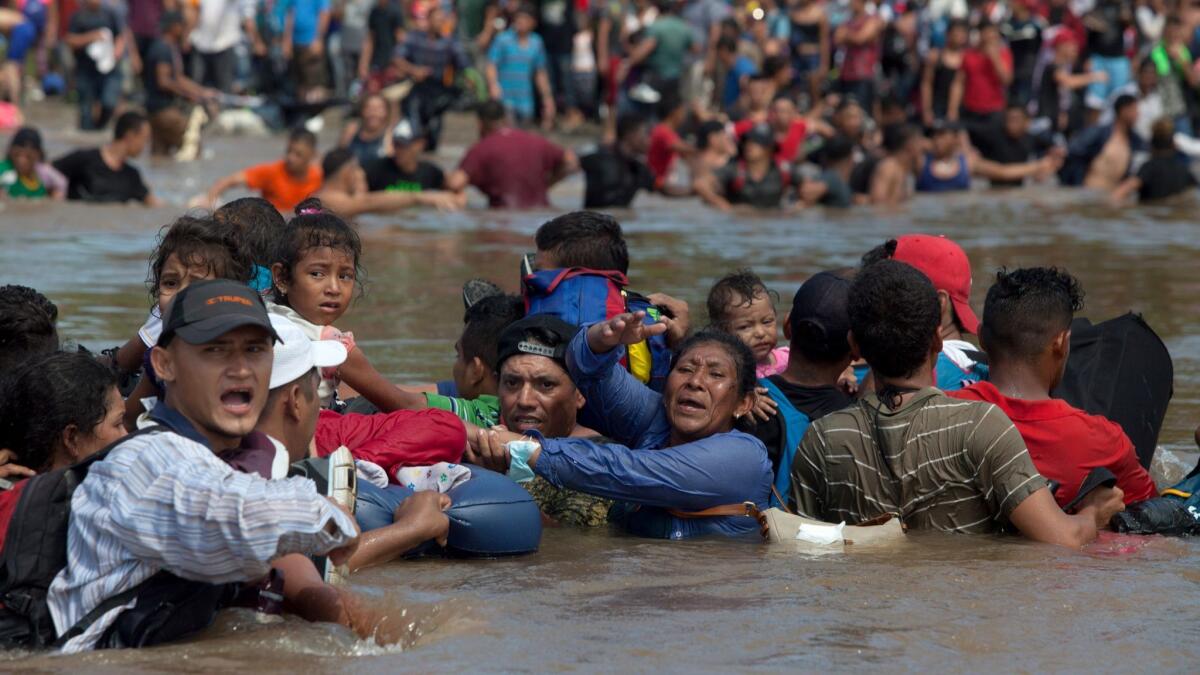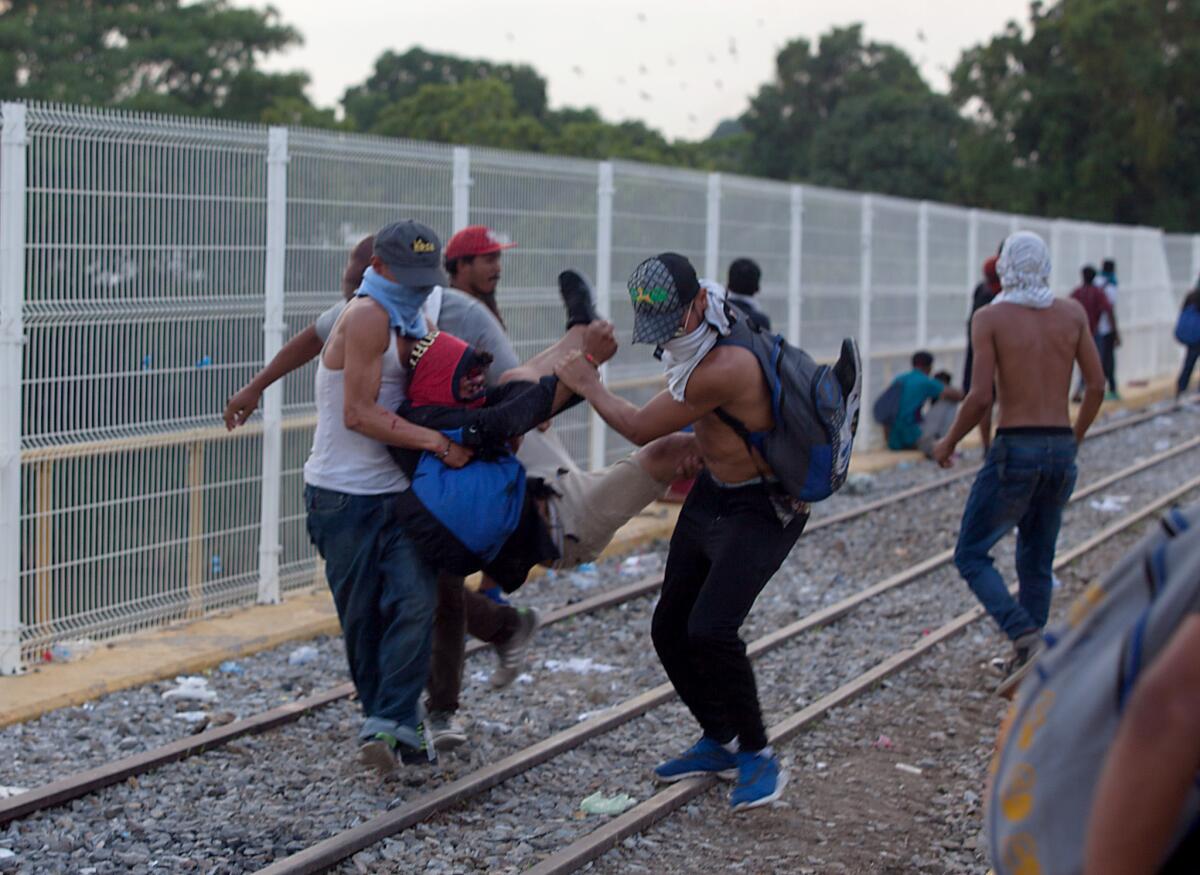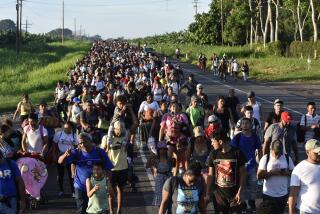Migrants keep moving north after melee at the Mexico-Guatemala border leaves one dead and dozens injured

Reporting from Mexico City — Hundreds of Central American immigrants Monday forded the fast-moving Suchiate River to cross illegally into Mexico a day after violent clashes at the Guatemala-Mexico border left one man dead and dozens of people injured.
The migrants, who struggled through shoulder-deep currents as a police helicopter buzzed overhead, managed to cross onto Mexican soil. But they were met by dozens of Mexican federal police officers and immigration agents, who took many of the migrants into custody.
The dramatic scene at Mexico’s southern border came more than one week after an even larger caravan of immigrants illegally crossed the Suchiate and began the long trek toward the United States.
That caravan, which consists of about 4,000 migrants — many from Honduras — prompted President Trump to order thousands of soldiers to the U.S.-Mexico border. As of Monday, it was still about 900 miles away, in the southern Mexico town of Niltepec. The caravan, which has not been stopped by Mexican authorities since it crossed the river Oct. 20, has inspired thousands of other Central American immigrants fleeing poverty and violence to set out together in recent days in large groups heading north.
The most recent caravan arrived over the weekend in the Guatemalan town of Tecun Uman, just across the Mexican border.
At first, migrants found themselves unable to cross the river, which on Saturday was being patrolled by Mexican soldiers and more than a dozen Mexican marine boats, and unable to access the bridge that leads to a legal border crossing into Mexico. The border crossing in the Mexican town of Ciudad Hidalgo has not been fully operational since members of the first caravan clashed there with police last week.
On Sunday, members of the new caravan tore down a chain-link fence that Guatemalan officials had erected to prohibit entry onto the bridge. They pushed past dozens of Guatemalan forces who sought to deter them with shields and rounds of tear gas.
Hundreds of migrants then began streaming onto the bridge toward the Mexican side, where they were met with several other metal fences and dozens of federal police. Mexican President Enrique Peña Nieto ordered hundreds of police to the border this month after Trump threatened to back out of a pending North American free trade deal if Mexico did not stop immigrants from crossing the border.
Some migrants threw rocks and glass bottles at police and officers responded by firing rubber bullets, according to migrants and journalists who were at the scene. A Mexican police helicopter circled overhead, they said, dropping tear gas onto the crowd.

A 26-year-old name Henry Diaz was hit in the head in the scuffle. Rescuers took him to a hospital, where he died.
Journalists and migrants at the scene said Diaz, who was from Tegucigalpa, the Honduran capital, was hit by a rubber bullet fired by Mexican police.
On Monday, Mexico’s interior secretary disputed that claim, insisting that police officers were not armed.
“The police did not have weapons, did not intend to attack any person, and the instruments used were deterrents so that no women, children or young people would suffer any harm,” the secretary, Alfonso Navarrete Prida, said in an interview with journalists.
Navarrete said that migrants had thrown Molotov cocktails at police and that Diaz had been photographed trying to knock down the entrance gate to Mexico with a battering ram.
Authorities said 10 police officers were injured, two of them seriously. Local news reports said at least 100 immigrants were injured as well.
Times staff writer Linthicum reported from Mexico City and special correspondent Abbott from Tecun Uman.
Twitter: @katelinthicum
UPDATES:
5:05 p.m.: This article was updated with additional information about the status of the migrants.
This article was originally published at 3:30 p.m.
More to Read
Sign up for Essential California
The most important California stories and recommendations in your inbox every morning.
You may occasionally receive promotional content from the Los Angeles Times.










